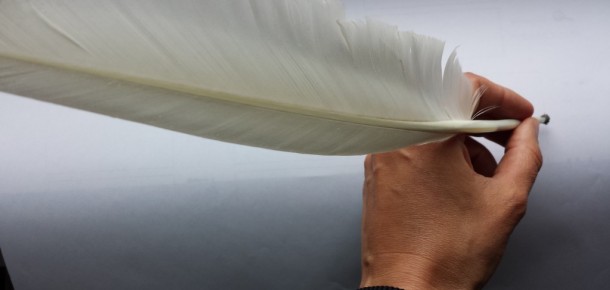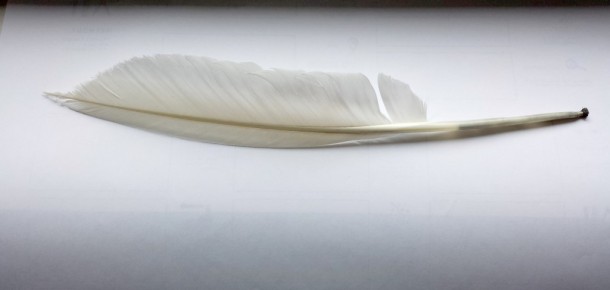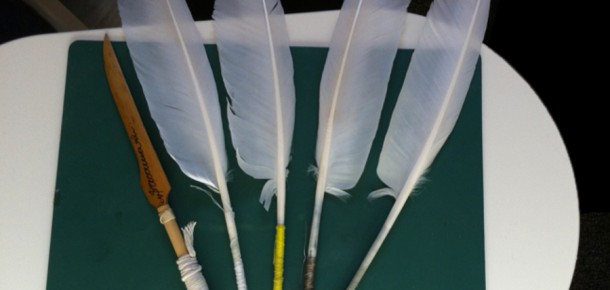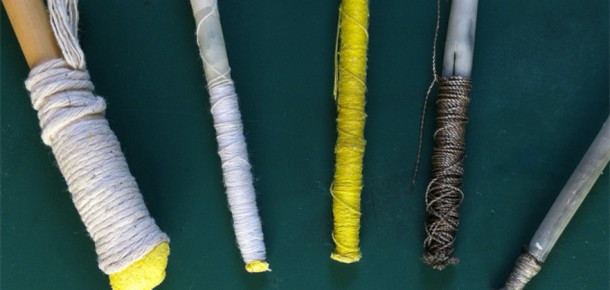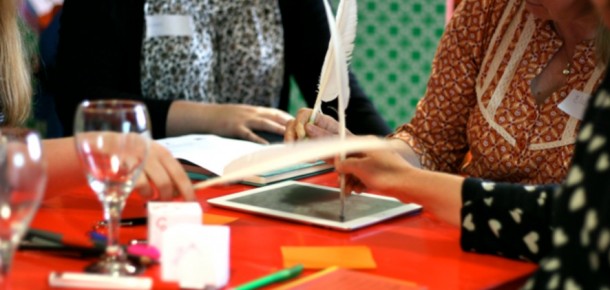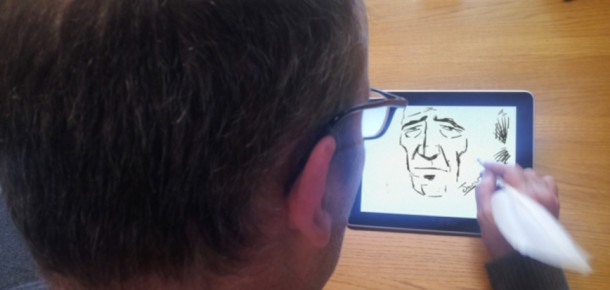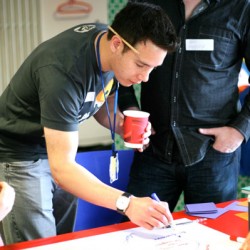The recent information revolution has transformed many facets of our lives in the move from physical to digital, and more recently from digital to physical. Word processing is no exception; paper has been replaced by a screen and hard drive, and the pen by mouse and keyboard, whilst the ubiquitous adoption of the touch screen combines touch and gestural interfaces.
The Digital Quill is an experimental drawing instrument designed to evoke users’ emotional and aesthetic engagement and is designed for drawing and writing on capacitive touch screen devices, such as mobile phones or tablet computers. We developed the digital quill as a prototype, bespoke, unconventional stylus for contemporary creative practice. The quill aims to enhance the user experience of touch screens and to inspire creativity by encouraging people to adopt a playful and delightful mind-set – a place where many creative and innovative ideas begin.
An understanding of creativity and the processes and methods that underpin it has been sought by researchers across disciplines, and informed by perspectives from philosophy, psychology, cognitive science, musicology, and art history. Indeed, the need for and acknowledgment of creativity as the basis for inventive problem solving and the resultant benefit to society is widespread. In addition to this, there has been a long tradition of using drawing and other pictorial forms as part of the development process in creative practice. In contemporary society, drawing is an aid to creative thinking, problem solving, working memory, mental synthesis and collaborative working across all creative disciplines, and these implications have been examined for design research, within other disciplines and applications.
Approach
The digital quill (as with its historic ‘quill pen’ counterpart) is made from a real goose feather but uses smart conductive fabric in place of the traditional ink well. The fabric is inserted into the quill shaft to form a brush-tip interface without being intrusive (fig 1) hence, the digital quill remains lightweight with its intrinsic elegant ergonomic form preserved.
Capacitive touch screens are designed to detect the electrical properties of human touch. To emulate this a stylus must conduct an electrical signal from human touch through the stylus tip, so that when the stylus tip touches the screen the device can detect the signal. Water and metal are obvious conductive materials, metal being found in most commercially available stylus pens.
Taking inspiration from a Lo fi Hacker approach to construction (Myapplezone, 2010), the initial prototype utilised basic household materials and readily available tools, and was constructed using nothing more than a ballpoint pen, string and kitchen sponge. Prototype 2 aimed to further improve the consistency of the drawing experience along with enhancing the overall aesthetic and ergonomic experience. Prototype 3 aimed to explore alternative conductive materials, and so while the prototype was again constructed from a goose feather, the sponge was replaced with conductive smart fabric and conductive thread bound together with an adhesive.
We wanted to assess the value of the prototype against both a conventional stylus and the human touch to gather insights and uncover challenges that might impede the vision it embodied. So we ran workshop and asked participants what the benefits of a bespoke stylus might be when applied to digital sketchbook and drawing applications.
Summary of Findings
Our comparative evaluation shows the digital quill has a positive emotional impact on its users, inducing playfulness, happiness and a feeling of relaxation. One typical response was
‘fabulous, ironic – back to the action of pen and paper, natural and artificial… a double contradiction’ .
People reported a positive overall experience compared to that of a commercial stylus. Our findings show the digital quill out-performs conventional stylus pens being ‘accurate’, ‘faster’, ’neater’, ‘smooth’, ‘easy to hold’ and ‘more natural’.
Our future work will refine the quill and further investigate its affective potential with reference to ongoing research that seeks to support designing for emotion and serendipity, and in future provide design guidelines for the design of tools for the benefit of creative practitioners.
